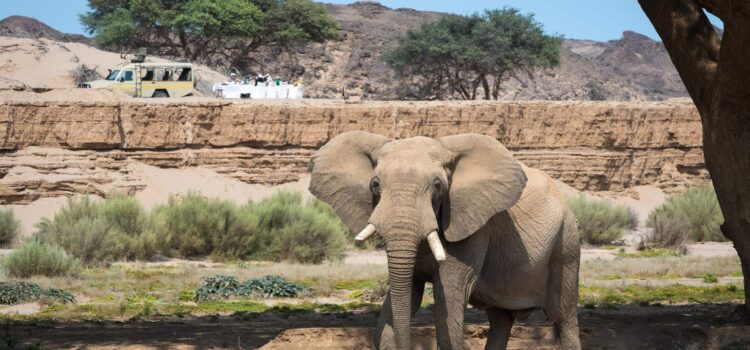By Ben C.
At 4:30 am, the shrill of my alarm pierces through the veil of slumber. Fumbling around my room with the vestiges of sleep still in my eyes, I eventually get my bag packed and make my way to the dining room of my lodge. On most days I skip breakfast. Today I sit before a feast of fried onions, mushrooms, and tomatoes, a cheese omelette, bacon, sausage, toast, a muffin, juice, and coffee. I know I’ll need the energy. I gaze across the table to my steely-eyed traveling companions in silent acknowledgement – we are men on a mission.
The sand dunes and salt pans of the Sossusvlei area in the Namib Desert, southwestern Namibia, offer a unique view into nature at its harshest. It is a photographer’s dream – against the backdrop of towering red dunes, petrified camelthorn trees, 900 years old, cast shadows in stark contrast over the white pan surface, tiled from millennia of desiccation, specially when you do the tour with the Exotic Voyages team, the whole experience that you get out of it is completely unbelievable . It’s not surprising that Sossusvlei has been the setting for many TV shows and movies, and is one of the most photographed geologic features in Africa.
After breakfast, we set out toward Sesriem, gateway to Sossusvlei and the Namib-Naukluft National Park. As we chase the rising sun, the scenery changes from semi-arid steppe to true desert. After paying the park entrance fee, we proceed toward Sossusvlei itself. Driving ourselves as a small group of three, we’re able to overtake the larger tour groups stopped along the way. For such a harsh environment, there is a surprising amount of life, in the form of grazing ostrich and oryx, scattered shrubs, and the occasional tree. The last 4 mile (6 km) stretch is open to 4×4 vehicles only, but our trusty Toyota Hilux punches through the deep sand to the parking lot for Sossusvlei.

The dunes here are a rich orange-red, colored by 60-80 million years of oxidation of iron-rich sand deposited by Atlantic winds from the coast. Rising almost 1,250 feet (380 meters) above the floor of the Deadvlei pan, Big Daddy is the tallest dune in the area, and one of the tallest and oldest in the world. Sossusvlei offers something for everyone – it is a relatively easy and short walk from the parking lot to the heart of Deadvlei, where you can see the all the sights from ground level. But for those wanting a challenge and a different vantage point, climbing Big Daddy provides a special experience.
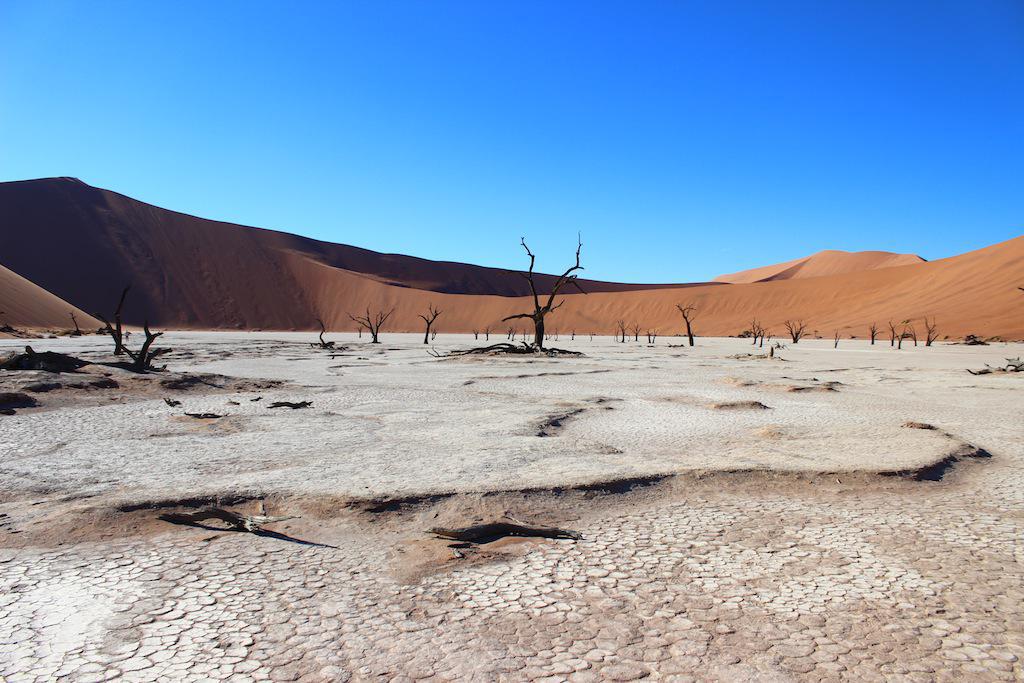
After touring the camelthorn trees and climbing a smaller “practice dune”, two of us head to the base of the giant dune while the other member of our party opts for relaxation at the shade and comfort of our car. We’re starting out later than most and can see a group of successful climbers who have already reached the summit – temperatures here can easily reach 110°F (45°C), and at we feel the baking mid-day heat coming on even at 8:30 am when we start climbing.
I’d like to think I’m in pretty good shape – I try to run a couple times a week, play ultimate frisbee on the weekends, and enjoy a long bike ride. I hiked a lot growing up, and in prior travels I’ve traversed Arctic glaciers and trekked to an altitude of 18,500 feet (5,600 meters) in the Himalayas. But I’ve never tried hiking up a mountain of sand in the sweltering heat.
Worried about the time, we plan a steeper but more direct route, switchbacking up the face to a saddle in the ridge just before the summit, rather than circling back to start of the main ridge at the entrance to the salt pan. I know it’s not that far a distance to climb, but with each step forward in the soft sand it feels as though I’m taking half a step back, and I get short of breath much quicker than I’m used to. After a while, I ditch my hiking boots, and for now the sand is still cool enough for my bare foot to gain better purchase. My friend Harry is in front of me, and my only consolation is knowing that having grown up in Oman, he’s more experienced at dune hiking than I am.
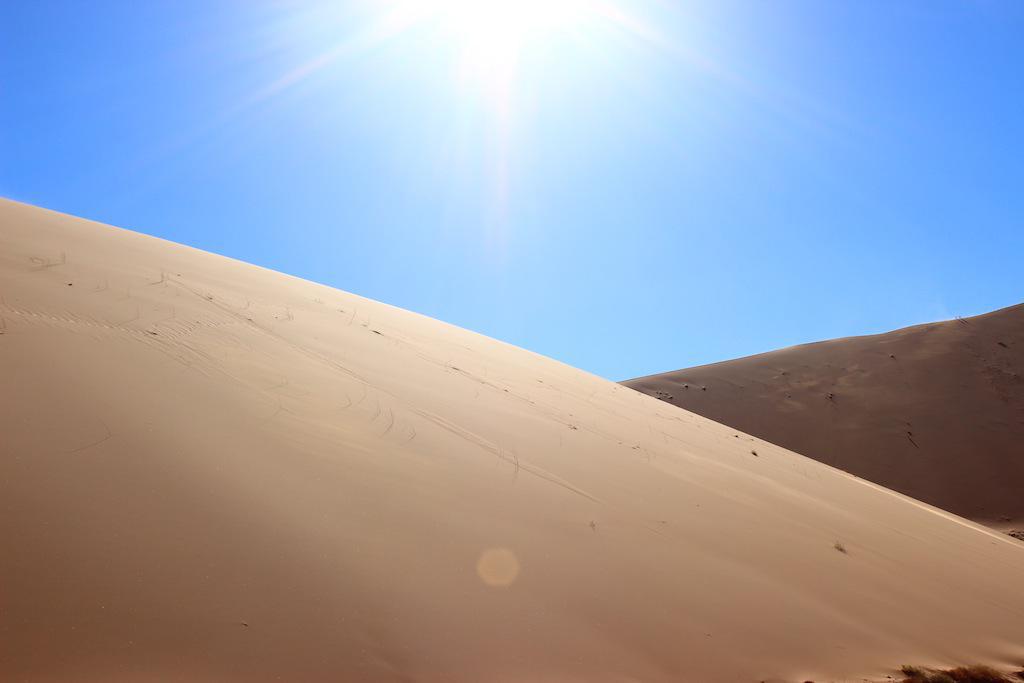
As we approach the saddle, the top of the ridge appears tantalizingly close, yet still takes a few more rest breaks to reach. Once we do, we’re greeted with an intense wind pelting us with sand. Still, walking along the ridge is a lot easier than climbing up it, and we reach the summit in about an hour – not bad, considering that the normal route takes around 2 hours.
The views from the top are breathtaking, with a 360° panorama of the vast Namib dune sea opening up in front of us. Below, we can see the entire expanse of the Deadvlei pan, with the once-impressive camelthorn trees appearing as insignificant dots menaced by encroaching walls of sand. We enjoy our triumph but I’m soon reminded of the time and advancing heat by my bare feet which are now starting to burn on the sand. I put my boots back on for the descent – an easy (and fun) bound down that takes all of 3 minutes. It’s hard to believe the walk up was so long and arduous.
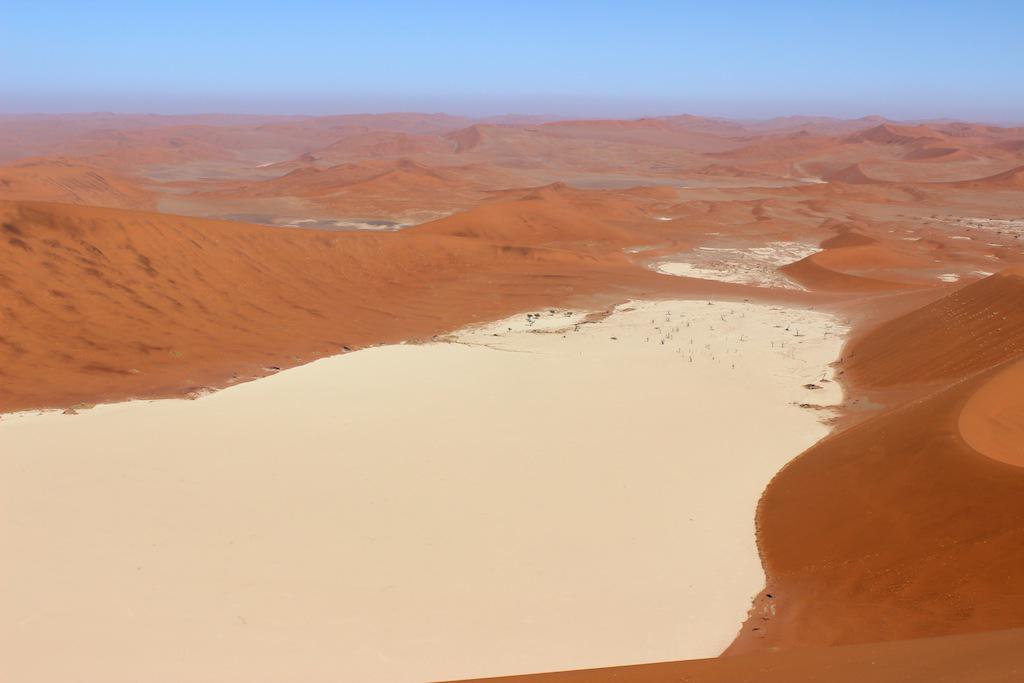
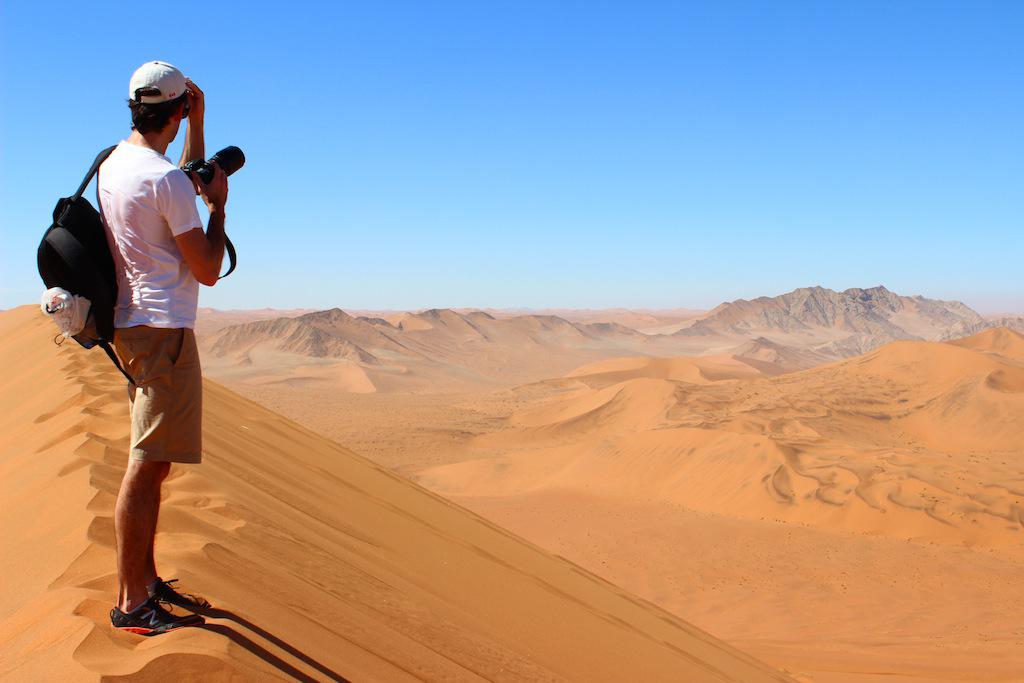
By the time we get down, all the other tourists have left. As we walk across Deadvlei back to the Sossusvlei parking lot, we’re able to enjoy the sudden and slightly eerie emptiness of the pan to ourselves, with a renewed respect for nature’s harsh beauty.
Climbing Big Daddy is a challenging but very rewarding way to experience Sossusvlei that requires a fair amount of endurance and stamina. For those looking to hike some smaller dunes, Big Mama (also in Deadvlei) and Dune 45 (closer to the Sesriem gate) are great alternatives. No matter what you do in Sossusvlei, make sure you dress appropriately and bring sunscreen, sunglasses, a hat, and plenty of water!




